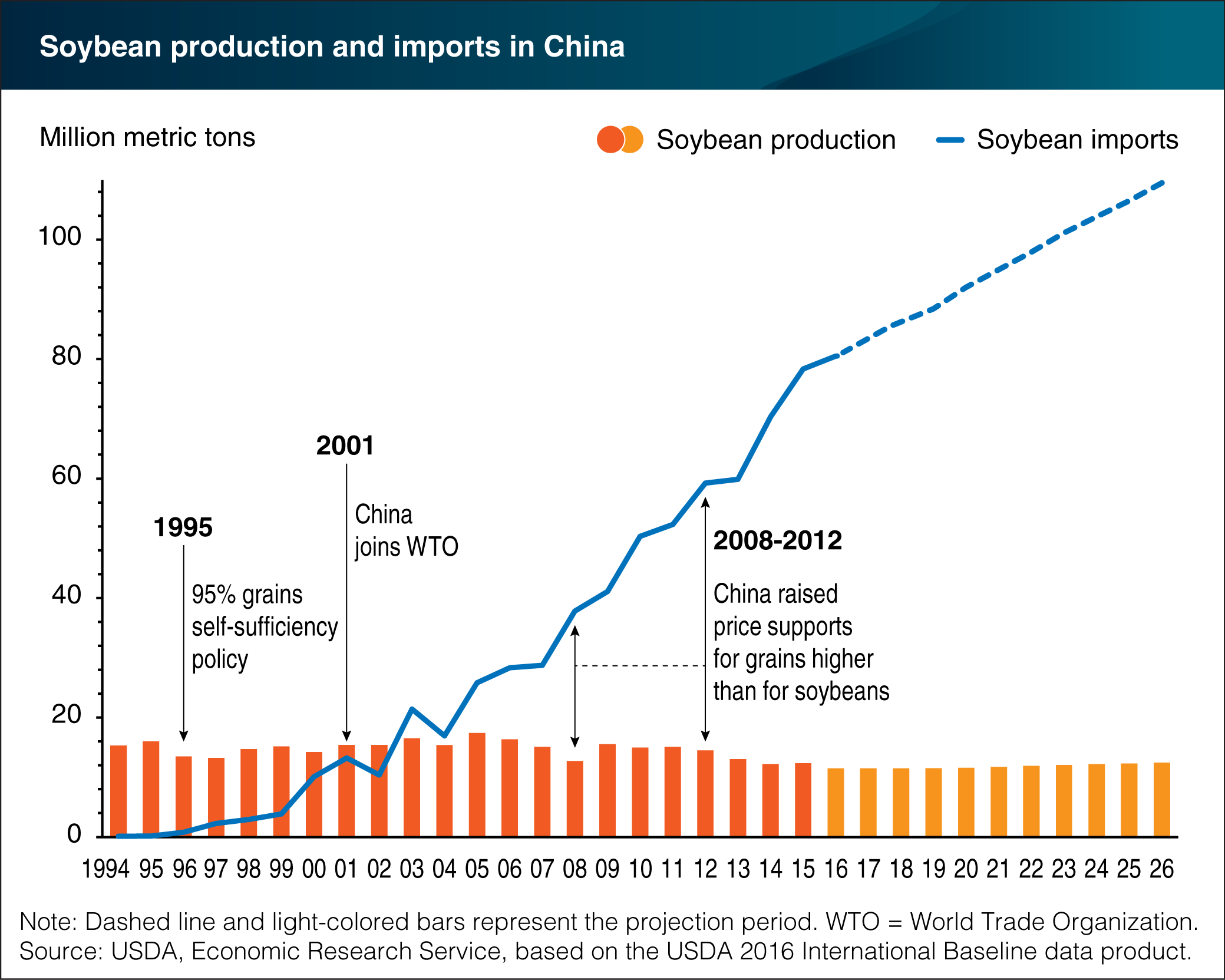China's demand for imported soybeans expected to remain strong
- by Tani Lee
- 5/16/2016

China is the world’s largest importer of soybeans. The country’s dominance as an importer reflects government policies that favor imports of soybeans over feed grains, coupled with dietary shifts toward more animal proteins, which creates a strong demand for soybean meal used for livestock feed rations. In 1995, China adopted a policy of 95 percent self-sufficiency for grains, and from 2008 to 2012 the country increased price supports for wheat, rice, and corn at higher rates than those for soybeans, making soybean production less attractive to farmers and resulting in an 18-percent decline in domestic production while soybean imports jumped 50 percent. China’s border policies also favor soybean imports. Import tariffs for soybeans are lower than those for soybean meal or oil, resulting in China’s oilseed-crushing industry becoming the largest in the world, and supplied mainly with imported soybeans. With China’s policies continuing to favor grain production over soybeans and its feed and livestock industries expected to continue growing, the country’s demand for imported soybeans is projected to remain strong over the next decade, increasing from 83 million tons in 2016/17 to 109.5 million tons in 2025/26. This chart is from the May 2016 Amber Waves article, “Major Factors Affecting Global Soybean and Products Trade Projections.”

